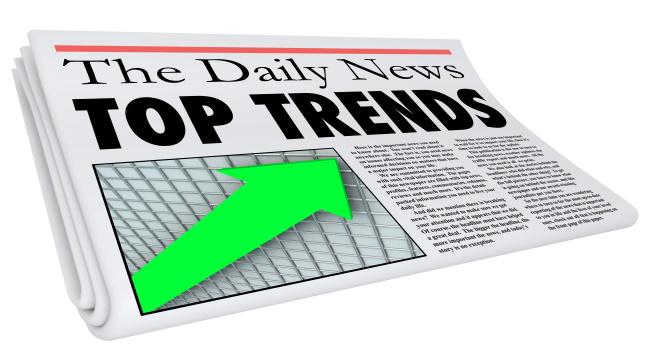Nach den Wirtschaftsdaten von gestern und heute, soll mir mal jemand erklären, wie es zu einer V-Erholung (Börse antizipiert gerade ein V) kommen soll. 5,7% Arbeitslosigkeit mit steigender Tendenz führt natürlich zu einem Rückgang (Stagnation) des Konsumentenvertrauens (für 2/3 der US-Konjunktur verantwortlich) . Der Spielraum für Zinssenkungen ist durch den Produktivitätsrückgang nur noch minimal, die Ausblicke der Unternehmen "übertreffen" zwar die teilweise um bis zu 70-80% revidierten Prognosen (ist ja toll..), wirkliche Wachstumsraten (20-30%) sind aber nirgends zu sehen. Dafür KGV`s von bis zu 350 (EMC; Stox wie kann man nur so einen Call halten...:) ).
kurzfristiges Korrekturpotenzial meiner Meinung nach enorm (Charts)
12/07 08:29
U.S. Nov. Jobless Rate Rises to 5.7%; 331,000 Jobs Are Lost
By Carlos Torres
Washington, Dec. 7 (Bloomberg) -- The U.S. unemployment rate rose last month to the highest in more than six years, and payrolls fell for the fourth straight month, signs the economy may be slow to emerge from the first recession in a decade.
The jobless rate increased to 5.7 percent in November, the highest since August 1995 and more than expected, from 5.4 percent the previous month, the Labor Department said. Payrolls fell by 331,000, also more than expected, after dropping by a revised 468,000 in October.
``This downturn may be longer and worse than people think,'' said Sophia Koropeckyj, senior economist at Economy.com in West Chester, Pennsylvania, before the report. Businesses ``are still under a lot of pressure and, since they have very little pricing power, they are going to cut costs by cutting jobs.''
Parker Hannifin Corp., Ingersoll-Rand Co. and Emerson Electric Co. count among manufacturers closing plants and firing workers in response to declining profits. Service companies such as Sabre Holdings Corp. are also cutting jobs as the slowdown spreads beyond factories. That points to rising unemployment and more job losses in coming months.
Analysts had expected a jobless rate of 5.6 percent and a job loss of 200,000 in November.
The National Bureau of Economic Research has declared the U.S. in a recession that started in March. The economy contracted at a 1.1 percent annual rate between July and September as consumer spending cooled, business spending slumped, and companies slashed inventories. That was the largest decline since the first quarter of 1991, at the end of the previous recession.
Unemployment is Likely to Rise
The unemployment rate is up 1.4 percentage points since March, more than the 1.3 percent increase in the first eight months of the 1990-1991 contraction and less than the 1.8 percentage-point rise in the comparable period for 1981-1982.
Since the recession began in March, the economy has lost 1.2 million jobs, the Labor Department said. That compares with 1.4 million lost in the first eight months of the 1990-1991 recession, when the workforce was smaller, and a 1.1 million decline in the 1981-1982 recession.
Unemployment is likely to continue to rise as companies trim hiring plans. The number of U.S. companies planning to add workers in the first quarter declined to 16 percent, the fewest in 18 years, from 27 percent for the first quarter of 2000, according to a survey of 16,000 employers by Manpower Inc.
Federal Reserve policy makers have lowered the target for the benchmark overnight bank lending rate 10 times this year to try to stem the slide. At 2 percent, it's the lowest in 40 years. Central bankers are likely to cut the rate by a quarter percentage point at their next meeting on Tuesday, based on the median of 57 forecasts in a Bloomberg News survey.
Factories lost 163,000 jobs in November, the 16th straight drop, after eliminating 124,000 positions in October. Since July 2000, manufacturing has lost 1.4 million workers.
`Stay in Recession'
Parker Hannifin, a maker of hydraulic and automation equipment, has fired 5,700 workers and closed 27 plants since the start of the year, said Jack Myslenski, chief operating officer, at a Lehman Brothers Inc. conference in Florida last week.
``North America will stay in recession for the next nine months,'' Myslenski said. ``There's nothing to indicate otherwise.''
Ingersoll-Rand, which makes refrigeration equipment and temperature-control systems, will shutter five plants, bringing its total factory closings to 25, and trim an unspecified number of jobs, said Chief Financial Officer David Devonshire, at the same conference.
Emerson Electric, the biggest maker of power systems for telecommunications and computer networks, plans to close 10 plants in the next few years, Chief Executive Officer David Farr said. Emerson, whose profit declined for the first time in 43 years in fiscal 2001, wants to move production from the U.S. to countries with lower labor costs such as China and Mexico, Farr said.
Services Employment Falls
Employment at service-producing companies, such as travel- related businesses, fell by 164,000 in November after a 327,000 decline the previous month, the government said. The decline was the third in a row.
Sabre, the largest travel reservation company and owner of Travelocity.com, will cut about 470 employees, or 7.8 percent of its workforce, to reduce costs, spokesman Michael Berman said this week. The cuts, due to start next month, come as a result of lost bookings following a slowdown in travel after the Sept. 11 terrorist attacks.
``We have to take this action to get our costs in line,'' Berman said in an interview.
Retailers lost 14,000 jobs after losing 119,000. The decline was fourth in a row and reflects caution among retailers leading to the holiday shopping season. U.S. retailers' November sales at stores open at least a year rose 2 percent, less than expected. The gain from November 2000, based on results at 77 chains, fell short of the 3 percent forecast by Bank of Tokyo-Mitsubishi Ltd.
The bank's economist, Mike Niemira, said he's cutting his estimate for the November-December holiday period in half to 2 percent, the smallest holiday rise since 1990.
One exception was auto dealers, which added 6,000 jobs. That reflected the ``incentives offered to boost car sales,'' the Labor Department said.
Average Earnings
Construction jobs fell by 2,000 in November after falling by 17,000 in October.
Workers' average hourly earnings rose 0.3 percent, or 5 cents, in November, after a 0.1 percent increase in October. Average weekly earnings rose to $495.13 last month from $491.98 in October.
The available labor pool rose to 12.9 million from 12.4 million in October. That combines the number of unemployed job seekers and people not counting themselves as unemployed who nonetheless looked for work in the last 12 months and said they would take a job.
The Labor Department also said:
-- The percentage of the U.S. population holding jobs fell to 63 percent in November from 63.3 percent in October.
-- Average weekly hours worked rose to 34.1 in November from 34 in October.
-- Manufacturing overtime fell to 3.7 hours in November from 3.8 hours in October.
The government's monthly job growth figures are based on statistics provided by businesses, while the unemployment rate is based on a survey of U.S. households.
Among blacks, the unemployment rate rose to 10.1 percent from 9.7 percent in October. The jobless rate for Hispanics increased to 7.6 percent from 7.2 percent.
For teenagers, unemployment rose to 15.9 percent in November from 15.5 percent in October. The jobless rate for women rose to 4.9 percent in November from 4.8 percent. The jobless rate for men increased to 5.3 percent from 4.8 percent.
mfg
füxlein
Text zur Anzeige gekürzt. Gesamten Beitrag anzeigen »





